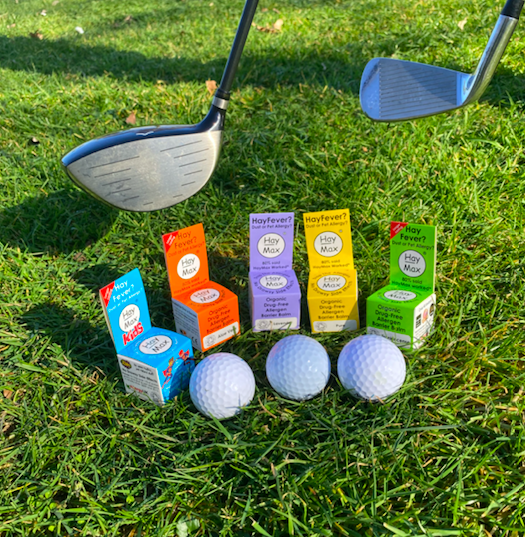If you’re one of the unlucky ones whose hay fever is triggered by tree pollen, spring can be a real misery. And if you enjoy a round of golf, hay fever can have a profound effect on both your performance and enjoyment. With Birch, hazel, willow, alder and elm trees all wafting out their pollen at the same time, its effects can be overwhelming. However there are things you can do to help you cope with all of this. Airborne allergens expert, Max Wiseberg gives his top tips.

Hay fever is one of the most common allergies for golfers, with debilitating symptoms such as streaming eyes, sneezing, a runny, stuffed up nose and itching around the face. Thankfully, there are many ways golfers can reduce, prevent or combat the effects and symptoms of hay fever. As with many allergies, prevention can be better than cure. If pollen doesn’t get into your system, it can’t cause a reaction.
Try to time your round so it’s not when pollen counts are highest during the peak morning and evening periods. Pollen is released early in the morning then travels upwards as the air warms up. In the evening, as the air cools, it moves back down again and the pollen grains reach nose height. Symptoms are usually worst at these times, so avoid going outdoors then.
Try to keep in the middle of the fairway so you are as far away from any trees as possible!
Apply an organic drug-free allergen barrier balm, such as HayMax (www.haymax.biz), around the rim of the nostrils and bones of the eyes before you start your round. Independent studies have shown that HayMax traps over a third of the pollen before it gets into the body. As HayMax is drug-free with no drowsy side-effects, it won’t adversely affect your performance.

Wear a cap or hat and tie up long hair to prevent pollen being trapped in it. Wraparound sunglasses will help protect your eyes from pollen.
Change your clothes when you return home and wash your face or take a shower to wash away allergens so that they can’t cause a reaction.
Dry your clothes indoors rather than on an outdoor clothes line to stop pollen being blown onto them by the outside wind.
A healthy diet can also help with hay fever. Eating healthily helps to keep our respiratory system strong. Some foods such as ginger or fresh basil, ease blocked nasal passages, helping us to breathe more easily, whilst others such as spinach and almonds contain nutrients that can help boost our immune systems and help our bodies fight sinus and respiratory infections, which are linked to allergies and hay fever.








